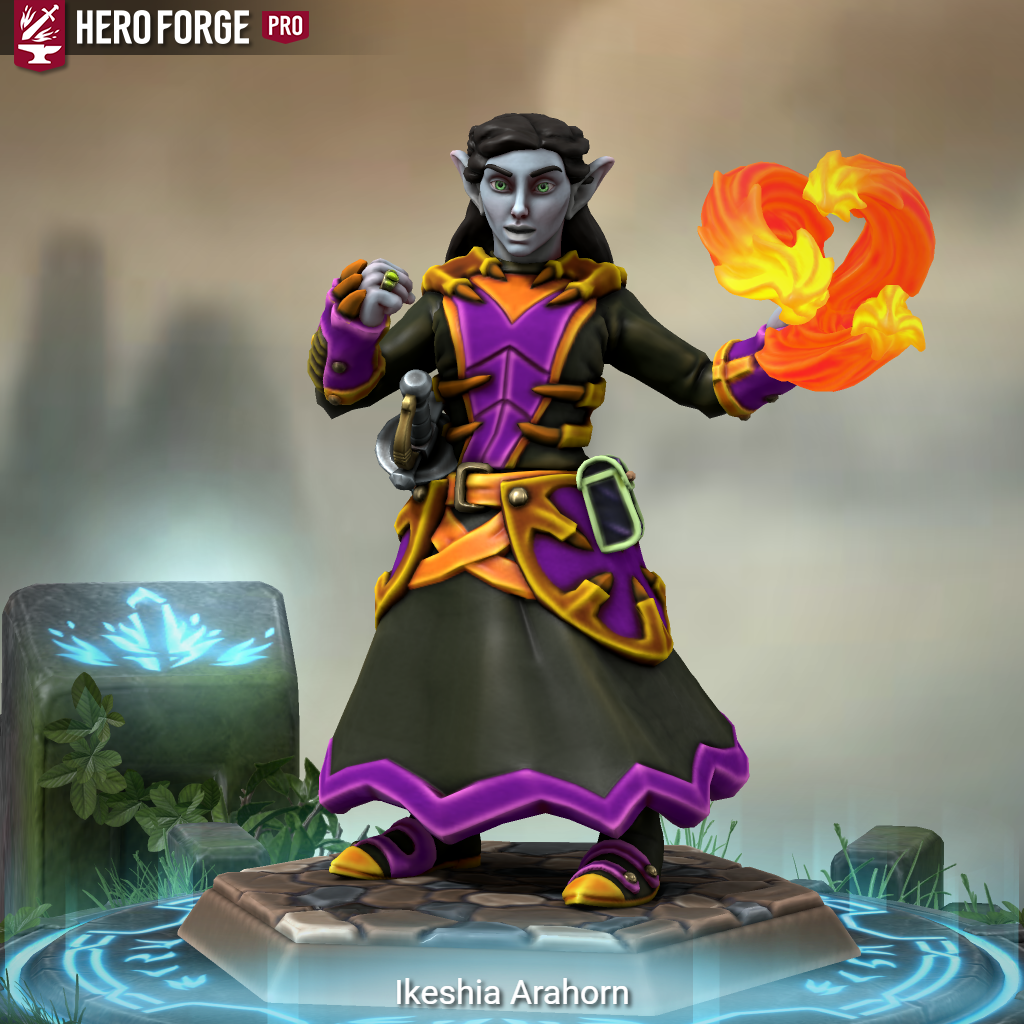Warlocks
Technically, warlocks male and witches female, are often referred to as warlocks in a unisex context. Treat "warlock" as a unisex term for the rest of this article.
A warlock is a mortal who has gained supernatural powers or enhancements by making a pact with an otherworldly being of some sort. This can involve almost anything, but is best known for the bestowing of arcane magic casting ability bestowed without the mystical birthright of sorcery or the long and difficult training of wizardry.
When it comes to otherworldly creatures that are willing and able to turn ordinary men and women into warlocks and witches, most of these otherworldly creatures are Greymoria spirits or powerful Fair Folk. Less often, they are Void demons or Nami spirits. The generic term for a otherworldly creature that empowers warlock is "Patron" with a capital "P".
Transmission & Vectors
Sometimes warlock powers and pacts are passed on to a witch or warlocks children and grandchildren, but most pacts are simply for the life of one individual.
Even if a warlock's power is not hereditary, the sons and daughters of witches and warlocks are more likely to be solicted by would-be Patrons than the general population is.
Causes
Magic always has a price and witches and warlocks are usually required to make a meaningful sacrifice at the start of their pact or an ongoing requirement to provide something of value to their Patron, often both.
History
At some point in the the First Age, Greymoria started empowering some of her canon fodder creations with warlock pacts in order to give them a better chance of beating dragons.
Greymoria based Warlock pacts became less common in the the Second Age as wizardry was first created then and expanded rapidly with total wizards rising to overtake sorcerers' and warlocks' total numbers combined.
Whether in ancient times or modern times, Greymoria is believed to intend most if not all of her witches and warlocks to act as her proxy agents in the mortal plane.
Late in the Age, a few Fair Folk started experimenting with empowering their own warlocks. This practice became more widespread after the First Unmaking to the point where Fae warlocks grew to eclipse Greymoria warlocks in number by the middle of the the Second Age and even more so in the the Third Age.
Some Fair Folk empower warlocks for sustenance, some to have mortal agents, and some out of boredom and curiosity. Often, FairiePatrons have varied and myserious motives for doing what they do.
At some point, Greymoria demanded that none of the rest of the Nine create warlocks of their own. For the most part, the rest of the Nine had zero interest in empowering warlocks, but Nami doesn't like being told what she can or cannot do.
Either late in the First Age or early in the Second Age, Nami started empowering a small number of witches and warlocks just to spite Greymoria.
Nami warlocks are very rare, and Nami places few if any demands on them, but Nami warlocks often find themselves inexplicable drawn towards unusual situations and conflicts. Many believe that the Lady of Winds empowers warlocks primarily for the entertainment value.
For all their differences in origin, Fae Warlocks, Nami Warlocks and Greymoria warlocks usually have fairly similar powers and abilities. Void warlocks are a different animal altogether with noticeably different powers and weaknesses.
Void Warlocks are technically a branch of Infernalists and worthy of a separate article.
Cultural Reception
Many princes and peasants alike do not bother to divide mages into their own special categories. It's more trouble than it's worth most of the time. Arcane magic is both potentially useful and a potential threat, so most "normies" are likely to categorize arcane mages by what they can do and waht they choose to do, rather than how they came to be.
When segments of society do differentiate between warlocks and other types of mages, warlocks are often viewed unfavorably compared to other types of mages.
Wizards, sorcerers , and warlocks all like to claim their version of arcane magic is "best" but wizards and sorcerers generally are better at playing public relations games because they are more organized.
Sorcerers are said to have an ancient birthright of the mighty dragons that helped slay Turoch and wizards develop their power with hard work and training. Warlocks are often viewed as usurpers or cheats who stole or faked their way into mystic power.
Most wizards are part of a formal tradition and/or informal association. Wizards are often but not always connected to society at large through guilds, covens, and direct ties to local leaders. Sorcerers are somewhat more independent but sorcerer families and organizations still seek to forge ties between a greater sorcery community.
By contrast, most warlocks are loners with ties to no one but themselves. Scarterrans, like medieval (or modern) humans are often mistrustful of strangers and dislike uncertainty and warlocks are usually strangers with uncertain motivations. A great many warlocks are wanderings with no permanent ties and when they do form greater ties, they are often to criminal interests.
Warlocks do not even have much community among their own kind. Warlocks with different Patrons are likely to have some sort of provincial rivalry while warlocks of the same Patron are likely to compete amongst themselves for their Patrons favor.
Greymoria affiliated warlocks tend to have a bit more solidarity with each other than Fae warlocks. Nami warlocks are so rare that most never meet another of their kind their whole lives.
Type
Magical
Children
Origin
Magical
Cycle
Chronic, Acquired & Congenital
Rarity
Rare


Comments